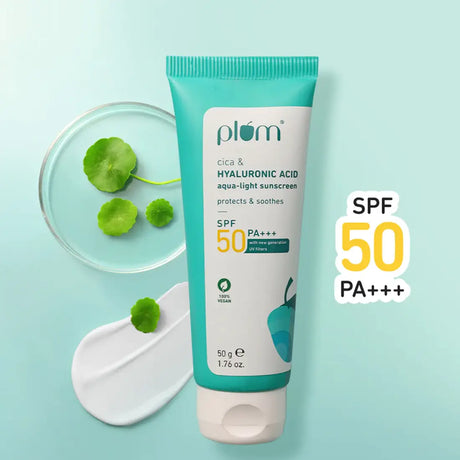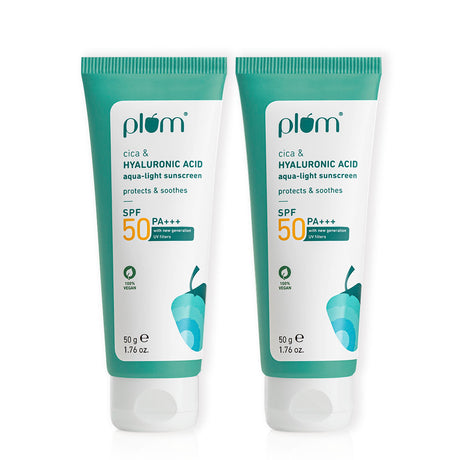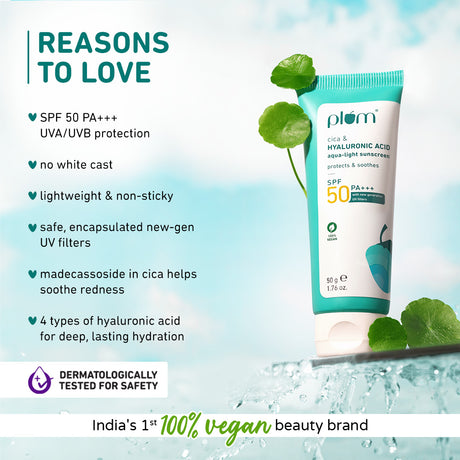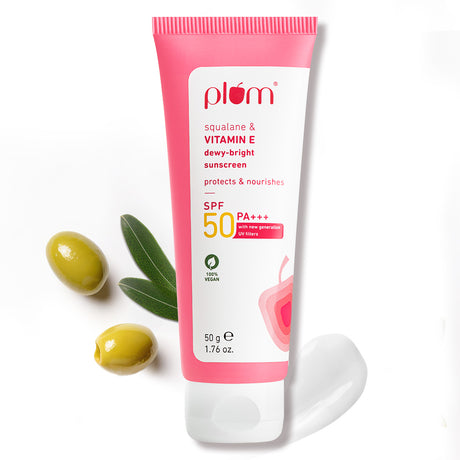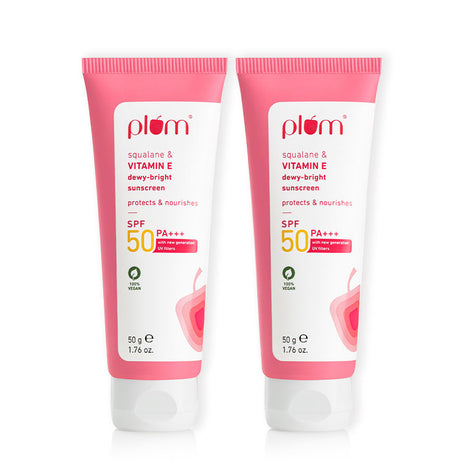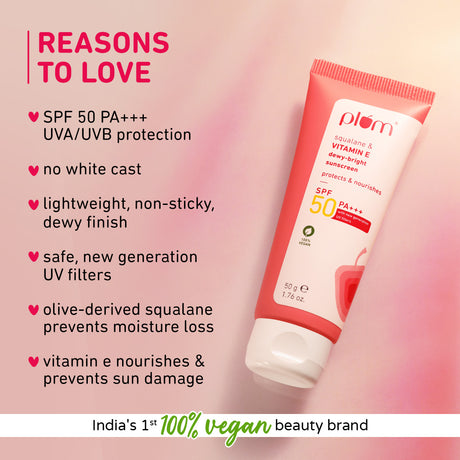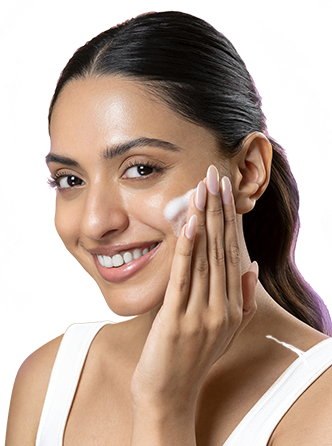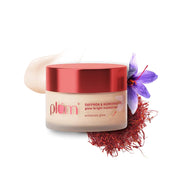
IN THIS ARTICLE
Sure, by now, the importance of applying sunscreens daily is no secret. It protects your skin from harmful UV rays, prevents sunburn, and even helps reduce the risk of skin cancer.
Additionally, some experts believe that regular sunscreen application can slow down signs of aging and keep your skin youthful for longer.
However, if you look at searches on popular search engines, "Does sunscreen prevent tanning?" is a frequently asked question. You might have wondered about it too at some point in the time.
So, to address this common question and understand sunscreen's effectiveness in preventing tanning, let’s start from the basics.
In this blog we will delve into the science behind tanning, the role of sunscreen in preventing tanning, and the best application method for optimal sun protection.
What is skin tanning?
Tanning is the skin's natural response to exposure to ultraviolet (UV) radiation. When your skin is exposed to UV rays, it produces more melanin, (the pigment responsible for skin color) to protect deeper layers of skin from damage.
This increase in melanin leads to the darkening of the skin, commonly referred to as a tan.
Simply put, tanning is your skin's natural defense against sunburn and damage.
However, the UV rays emitted from the sun have two types- UVA and UVB, the combination of which often can cause more damage than just a skin tan.
Types of UV radiation
The following two primary types of UV radiation affect the skin:
1. UVA rays:
UVA rays penetrate deeply into the skin and are primarily responsible for tanning. They can also cause long-term damage, such as premature aging and an increased risk of skin cancer.
2. UVB rays:
UVB rays affect the outer layers of the skin and are the main cause of severe sunburn. Such rays are also significantly responsible for the development of skin cancer.
To prevent the harmful effects of sun damage, you need to protect the skin from both kinds of UV rays. Sunscreens can significantly help do that.
How does a sunscreen help?
Sunscreen acts as a protective barrier on the skin.
Depending on the type of sunscreen used, It can either absorb or reflect the sun's rays.
There are two main types of sunscreen:
1. Chemical sunscreens:
These contain organic compounds (like oxybenzone and avobenzone) that absorb UV radiation and convert it into heat, which is then released from the skin.
2. Physical sunscreens:
These contain minerals (like zinc oxide and titanium dioxide) that reflect UV radiation away from the skin.
3. Hybrid sunscreens:
Hybrid sunscreens are the best of both worlds. It contains the ingredients of both physical and chemical sunscreens and protects your skin by both reflecting and absorbing sun rays simultaneously.
To know if sunscreen can prevent tanning, it is also crucial to understand a few factors that determine sun protection like SPF, PA, application process, etc.
What is PA?
PA stands for 'Protection Grade of UVA', which indicates the capability of your sunscreen to protect against UVA rays.
The higher the PA value, the better the protection. Therefore, more '+' signs mean greater UVA protection.
Since UVA rays are more responsible for skin tanning, you must opt for a sunscreen with PA+++ and above.
What is SPF?

SPF, one of the core determinants of sunscreen effectiveness stands for Sun Protection Factor. It is the measure of protection a sunscreen your skin provides against UVB rays.
So the higher the SPF in the product the greater the protection. However, UV protection is not directly proportional to SPF values—SPF 50 is not twice as strong as SPF 25. For example, SPF 35 blocks about 97% of UVB rays, while SPF 50 blocks about 98%. Therefore, you must use sunscreen with an SPF of at least 35.
On the other hand, opt for a higher SPF (50 or above) for prolonged exposure to the sun.
Will sunscreen prevent tanning?
Coming back to the question, can sunscreen really prevent tanning?
The answer is yes. Sunscreen significantly reduces the amount of UV radiation that penetrates the skin by acting as a protective barrier over it, thereby reducing the production of melanin and the resulting tan.
However, no sunscreen can block 100% of UV rays. Even high-SPF sunscreens allow a small percentage of UV rays to reach the skin, which can still lead to some tanning over time.
Additionally, several factors influence the effectiveness of sun protection when using sunscreen. Let’s look at how to apply sunscreen correctly to prevent maximum tan.
SPF Level:
As discussed above, a higher SPF offers better protection and can significantly reduce tanning.
Type of sunscreen:
It is best to opt for a broad-spectrum sunscreen that protects against both UVA and UVB rays, offering better overall protection.
Application amount:
Insufficient application or uneven application can reduce the effectiveness of sunscreen. You must take at least two fingers ' worth of sunscreen and apply it generously all over your face and neck. Moreover, pay attention to often-missed spots like the ears, neck, and the back of the hands.
Reapplication:
Apply sunscreen every two to three hours or more if swimming, sweating, or towel drying.
Prevent tanning with other sun protection measures
Now that you know that sunscreens can not prevent 100% tanning, some additional measures can protect your skin against sun damage and tanning.
-
Wear protective clothing:
Look for outfits that cover your skin as much as possible. Long-sleeved shirts, wide-brimmed hats, and sunglasses can provide extra protection. -
Seek shade:
Avoid sun exposure by staying indoors during the peak sun hours (10 a.m. to 4 p.m.). -
Use other sun protection elements:
You can also seek shade from the sun through umbrellas, canopies, and UV-blocking window films.
For comfortable wear and reapplication for the entire day, opt for a lightweight formulation that does not make your skin sticky or leave a white cast. Also, consider your skin type while making the choice.
You can try the following sunscreens from Plum that are enriched with the best ingredients and absorb quickly without making your skin greasy.
While sunscreen significantly reduces UV exposure and thus minimizes tanning, it does not entirely prevent it. To achieve the best protection and minimize tanning, use a high-SPF, broad-spectrum sunscreen, apply it generously and frequently, and complement it with additional sun protection measures.
FAQs
Q 1. How often should I use sunscreen to prevent tanning?
You should apply sunscreen daily and reapply every two hours, and more often if swimming, sweating, or towel drying for optimal protection.
Q 2. Can sunscreen prevent tanning completely?
No sunscreen can block 100% of UV rays. Therefore, some tanning might still occur on your skin. However, sunscreen application can significantly reduce the degree of tanning.
Q 3. Will sunscreen remove tan?
Sunscreen does not remove an existing tan; it helps prevent further tanning and skin damage.
Q 4. Is face sunscreen different from body sunscreen?
Yes, facial sunscreens are typically formulated to be lighter and less greasy, often containing additional ingredients to address specific facial skin concerns.



